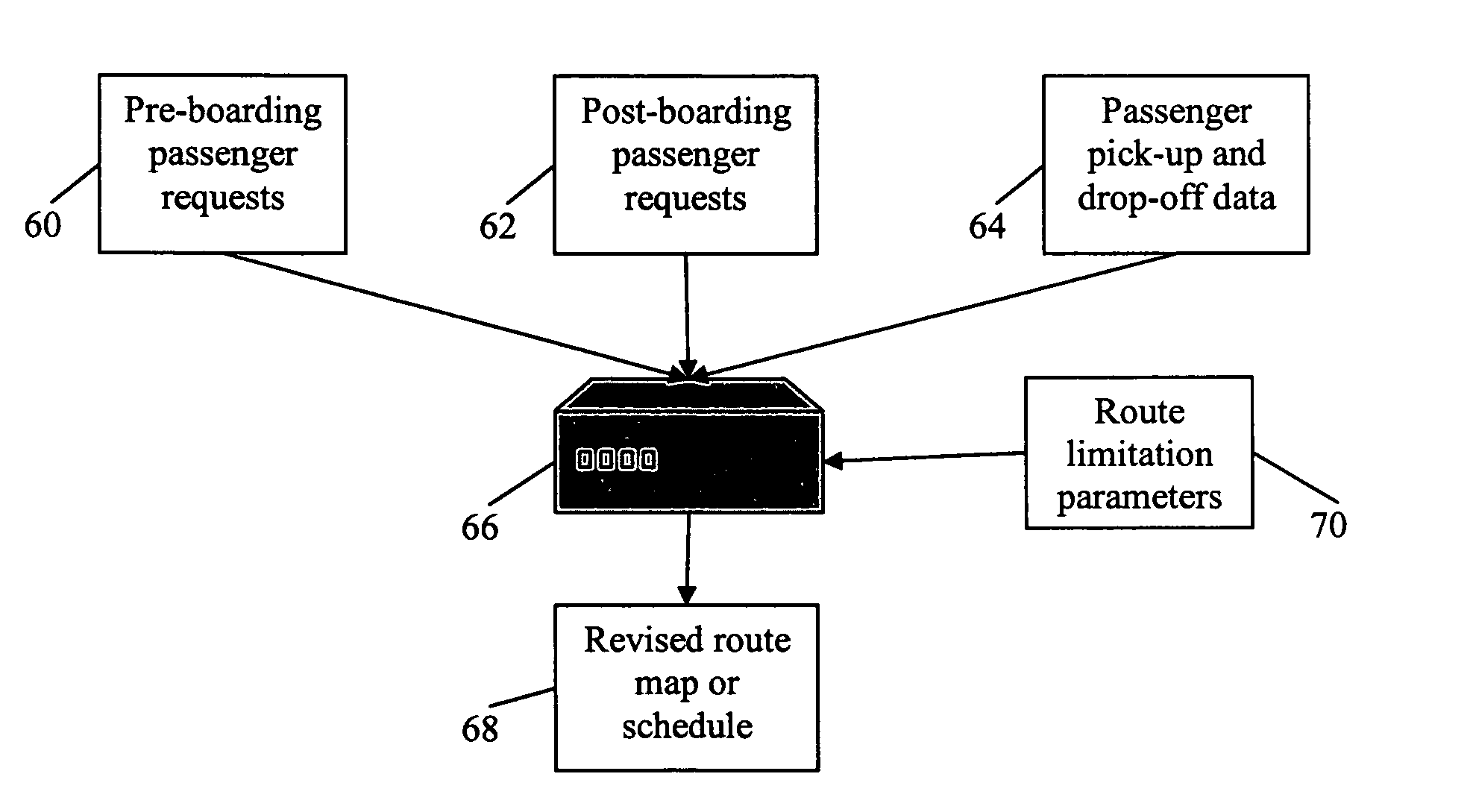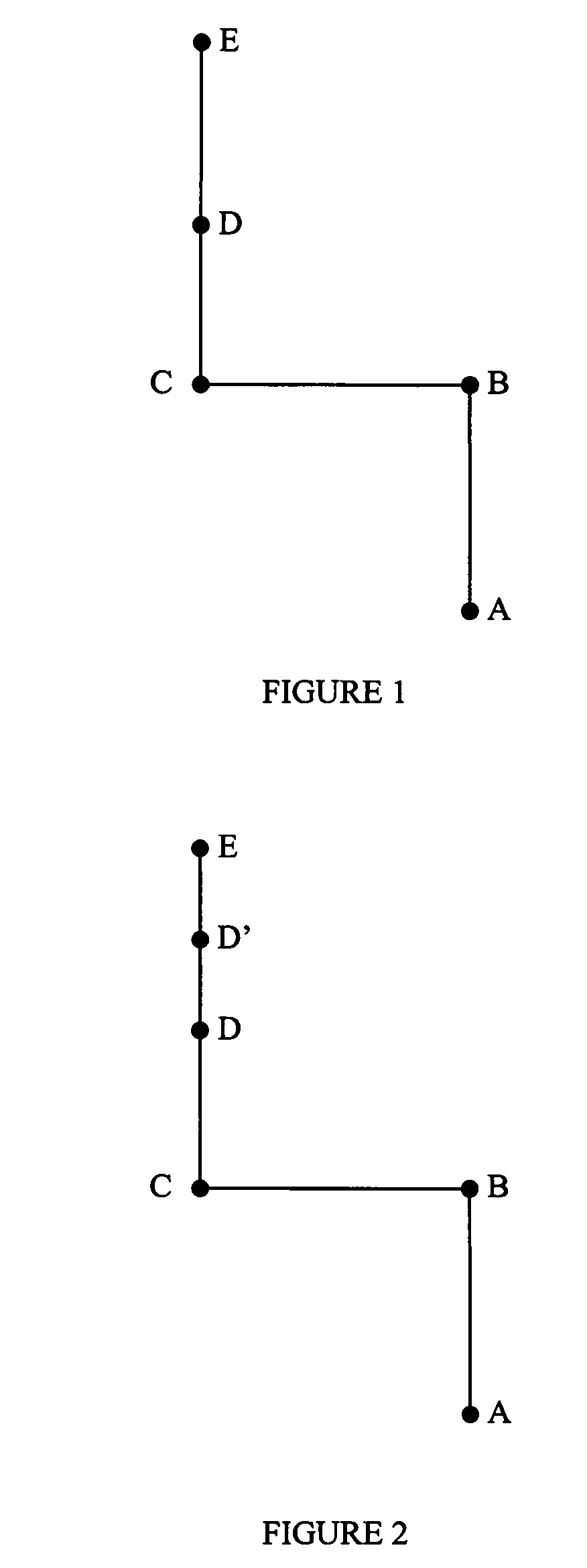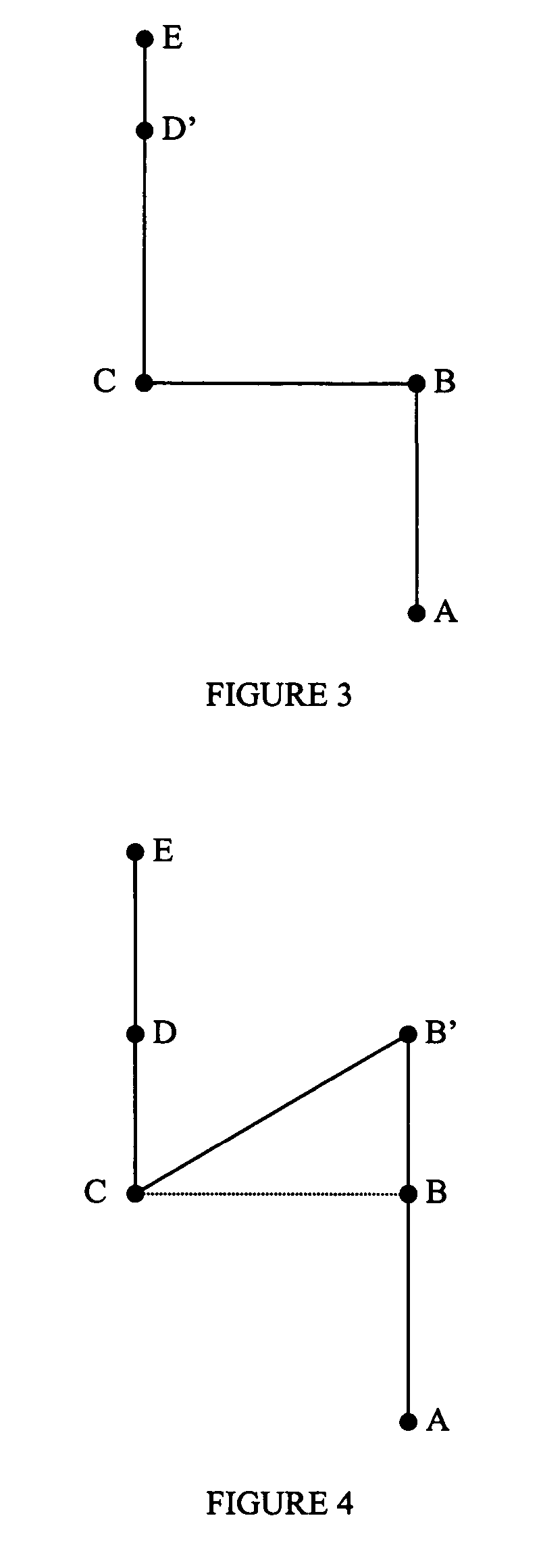System and method of optimizing a fixed-route transit network
a transit network and fixed-route technology, applied in surveying, navigation, measurement devices, etc., can solve the problems of not being able to gather the necessary information to develop a proper analysis of the route and stops, putting a great deal of effort and expense into selecting the proper questions
- Summary
- Abstract
- Description
- Claims
- Application Information
AI Technical Summary
Problems solved by technology
Method used
Image
Examples
Embodiment Construction
[0018] The invention is a method of optimizing a fixed route in a transit network, such as the five-stop (A-E) route shown in FIG. 1. The first step is to permit the vehicle to stop at locations along the route which are not currently designated stops in response to passenger requests to embark / disembark the vehicle. These requests are logged, preferably in conjunction with information about the number of passengers embarking / disembarking at the existing stops. It is noted that this type of flexible stopping is already provided as a courtesy service in some transit networks, usually with respect to night-time services, female passengers and / or passengers with physical disabilities.
[0019] Over time, it can become apparent that certain flexible stops are being requested at a high rate and possibly at a higher rate than existing stops. For example, as shown in FIG. 2, flexible stop D′, located between stops D and E, has received numerous requests. Therefore, stop D′ is added to the ro...
PUM
 Login to View More
Login to View More Abstract
Description
Claims
Application Information
 Login to View More
Login to View More - R&D
- Intellectual Property
- Life Sciences
- Materials
- Tech Scout
- Unparalleled Data Quality
- Higher Quality Content
- 60% Fewer Hallucinations
Browse by: Latest US Patents, China's latest patents, Technical Efficacy Thesaurus, Application Domain, Technology Topic, Popular Technical Reports.
© 2025 PatSnap. All rights reserved.Legal|Privacy policy|Modern Slavery Act Transparency Statement|Sitemap|About US| Contact US: help@patsnap.com



